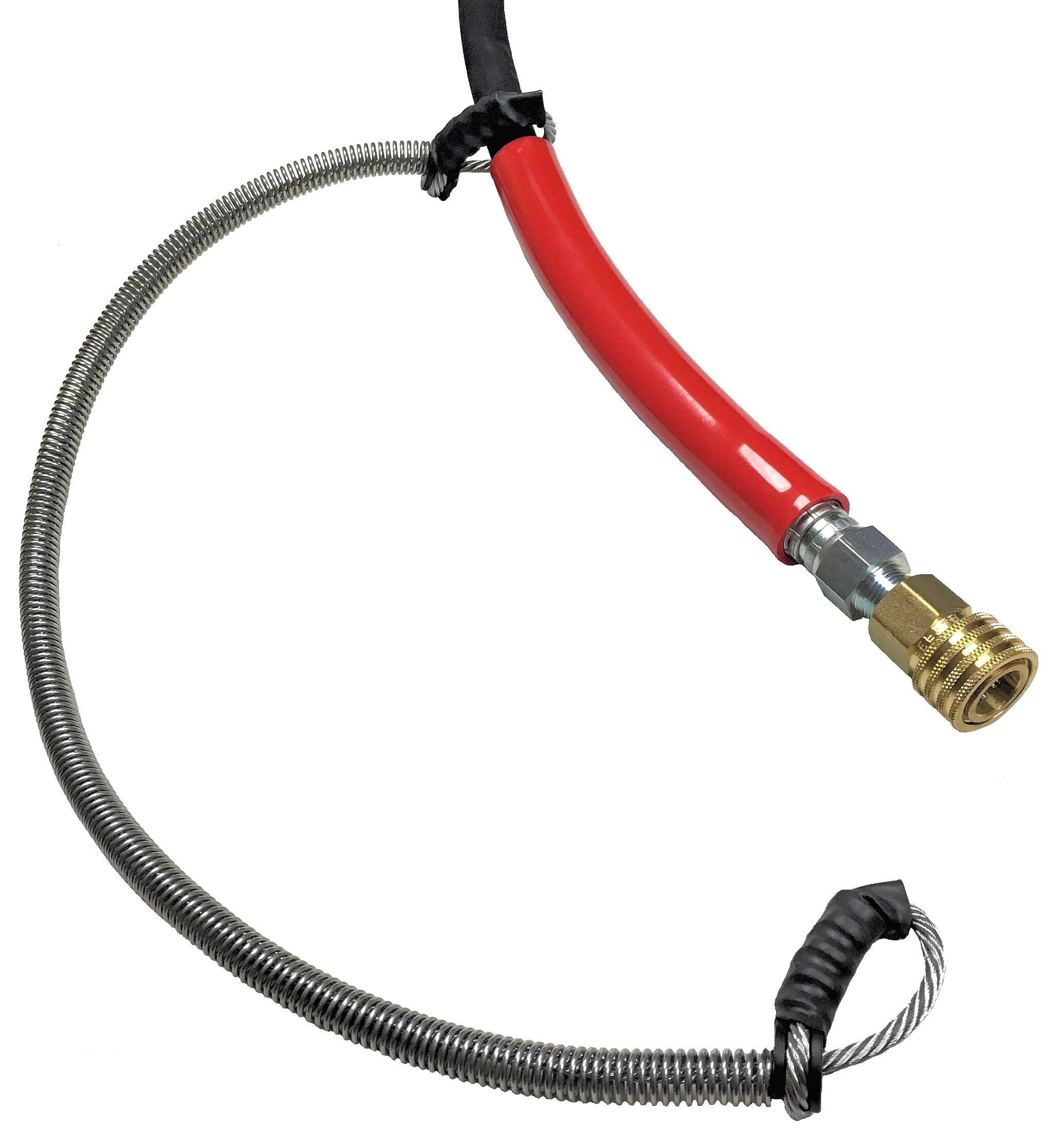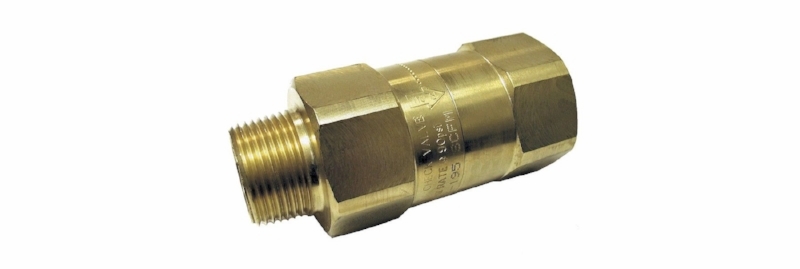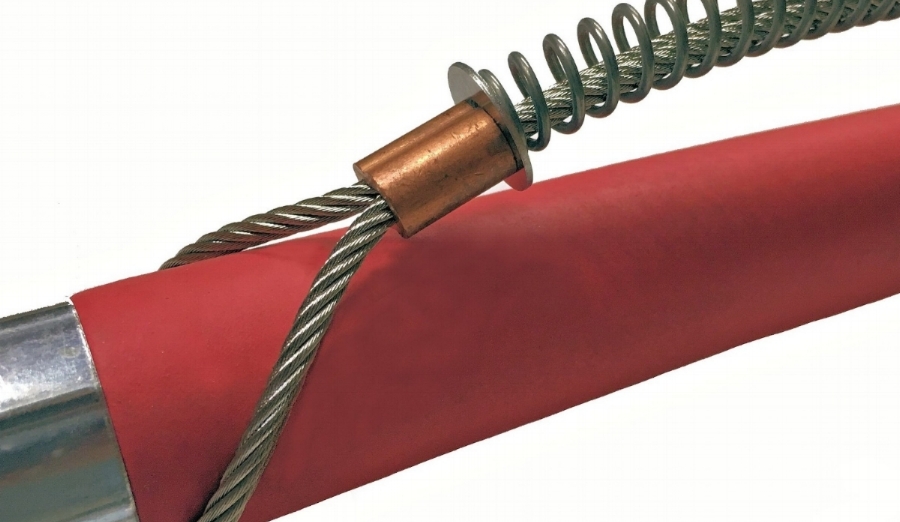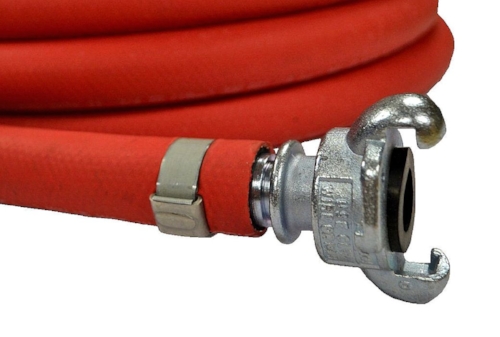Air Safety Check Valve Selection - Compressed Air Hose Safety
Air Hose safety check valves significantly reduce the hazards of pressurized air hose in the workplace. They are designed to work with compressed air hose on most pneumatic tool supply lines. When a surge is detected the valve will automatically shut off airflow eliminating the hazards of an unrestrained and unchecked air supply hose.
In many cases check valves are a basic requirement by oversight agencies including OSHA and MSHA. Whether to install safety check valves on a compressed air supply system is a question easily answered by their benefits. However, selecting the correct valve and where in the line it is best installed raises some more complex questions.
OSHA compliant air safety check valves cut off air flow when a surge in flow is detected
Installing an air safety check valve is as easy as threading it in-line following the directional arrows. But where it is installed and which valve is selected can mean the difference between simply passing a regulatory inspection and preventing serious injury to operators and bystanders alike. A compressed air hose can be equally or more dangerous than a hydraulic hose. Even with a lower operating pressure, larger diameter air hose can have significant force.
Safety check valves cut off air flow from the valve downstream. This means that any hose installed between the valve and the air source would not be effected by a failure. A check valve should be installed at the source, before the first hose assembly and any mating quick coupling. An additional valve should be placed at any manifold receiver or branch line. A ball valve can also be installed in order to control flow during normal use and in case there is a failure in the check valve. Warning: even with the supply flow cut off, a hose can still whip or travel until its pressure exhausts. Always use hose whip check cables or nylon safety restraints in addition to safety check valves.
In order to select the appropriate check valve, we need to look at how these products function. Safety check valves operate by utilizing pressure differential across the unit to operate a spring and valve assembly (see drawings below). When the pressure differential is within the operating range, the valve remains in the open position. When the pressure differential exceeds these limits, the force causes the valve to close, severing air flow. Once the pressure is relieved, the internal spring assembly allows the valve to open again, automatically resetting the valve for future use. Since the basic function of the valve depends on force caused by pressure differential, it is imperative to select a valve with the appropriate cut off range. The Pneumatic Safety Check Valve must have a cut off that is lower than the compressor’s output but higher than the tool being operated downstream. If multiple tools are being operated off the same supply line, please contact us for optimal configurations.
An internal spring stays open when flow rate is balanced - The spring is forced closed when flow rate surges beyond the preset cutoff range of the valve. The spring returns to the open position once the line is depressurized.
Cut off range is directly related to the SCFM of air flow which is drawn by the pneumatic tool. It is not enough to know the output of the compressor or air source, as the operation of the tool actually allows the air to flow through the air hose line.
To avoid accidental cut offs, select a valve that has a range of 110% of the maximum anticipated air flow.
Do NOT select a valve with a far higher cut off range to prevent accidental cut offs. This may help pass inspection but will not function.
Do NOT select a valve size that differs from the hose diameter because its cut off range better meets the anticipated air flow.
Do NOT use this product where 100% of airflow is required.
An additional check valve may be needed on hose lengths greater than 100 feet.
The SCFM cut off rate may differ on valves installed at manifolds or secondary valves on longer hose lengths.
Contact us for assistance in selecting and installing the appropriate valve for your application.
An anodized aluminum version is available in 90-100 SCFM cut off range in 1/2 and 3/4 sizes only.
Refer to the following chart to view the cut off ranges and a table of flow rate multipliers for varying pressures.
Conforms to OSHA 1926.302(b)(7) requiring a safety device at the source of air supply lines 1/2 inch or greater.
Also note: 1910.169(b)(3)(ii) and 1926.306(b) (3) (ii) No valve of any type shall be placed between the air receiver and its safety valve or valves. Install ball valves beyond the check valve, not between the check valve and the source!
Also see our blog post on regulations regarding air hose systems








